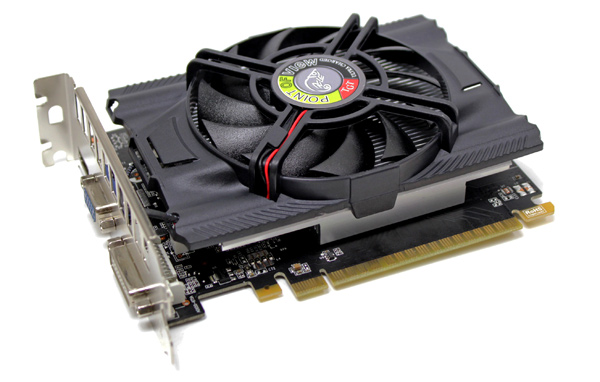Index

Review: 12 percent faster out of the box
Nvidia's latest launch involved two cards, the GTX 660 and GTX 650. We already tested the faster one, here, and its performance ranks somewhere between the HD 7870 and HD 7850. Today, we'll check out the GTX 650 and see how this card priced at around €100 fares against the competition, such has HD 7770 or GTX 550 Ti.
The GTX 650 is based on the GK107 GPU that Nvidia showed in June when it launched the GT 640. The GPU has two SMX units with 384 CUDA cores, 16 ROPs and 32 texture units. The GTX 650's performance bump from GTX 640 isn’t down to a new architecture however, just the clock. Namely, while the GTX 640 GPU runs at 900MHz, the GTX 650’s ticker runs at 1050MHz.
Point of View / TGT realized there’s no real fun without a more serious overclock and clocked its GTX 650 Ultra Charged as much as 131MHz higher, which equates to 12 percent. Memory overclocking helped the card to get a better bandwidth, up from reference 80GB/s to 89.6GB/s.
Unlike the rest of Kepler-based GTX cards, GTX 650 has no Boost technology, meaning the card runs constantly at its highest possible clock, which is 1189MHz in Ultra Charged’s world.
The GTX 650 Ultra Charged relies on single fan, dual slot cooling that shouldn’t have problems in cooling the card, but we’ll cover that in more detail later.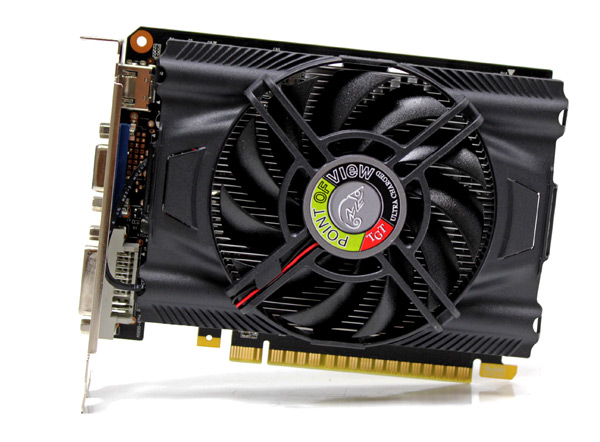
The GTX 650 has a 64W TDP and supports PCI Express 3.0, just like the rest of Kepler-based cards.
The boxes PoV/TGT used for the GTX 660 and GTX 650 are smaller than earlier GTX packages. We liked that as it wastes less cardboard. There’s not a lot of info on the box, just the basic stuff. Here we see the Ultra Charged emblem and a small sticker saying Low Leakage Selection. TGT likes to point out they handpick the best chips that take higher clocks well.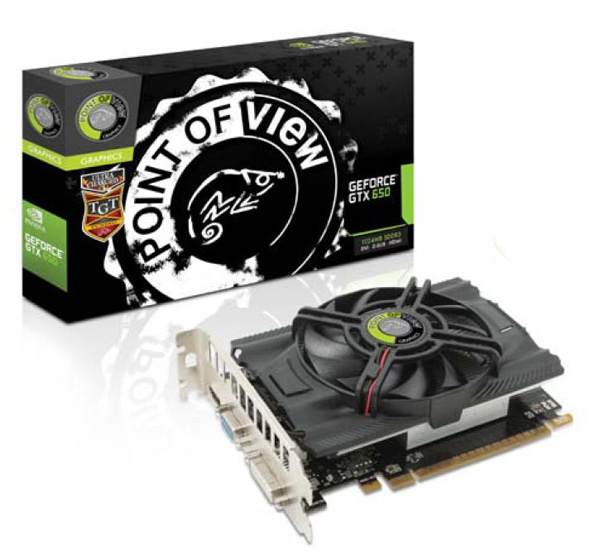
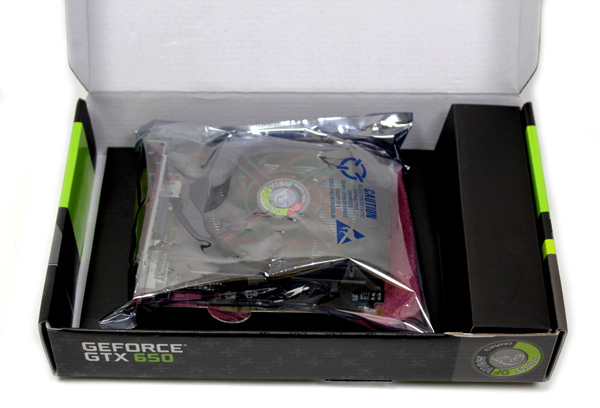
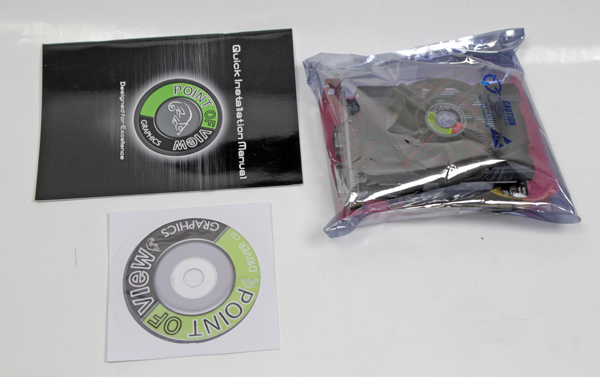
GTX 650 Ultra Charged is really a miniature graphics card, only 14.8cm long (PCB is 14.5cm). It couldn’t have been shorter because it would be too short for the PCI Express connector.
TGT strapped its factory overclocked GTX 650 Ultra Charged with dual slot cooling, making sure it’s quiet. The cooler is actually a simple solution made of a large heatsink and a single fan. The heatsink is one slot wide, while the fan takes up another.
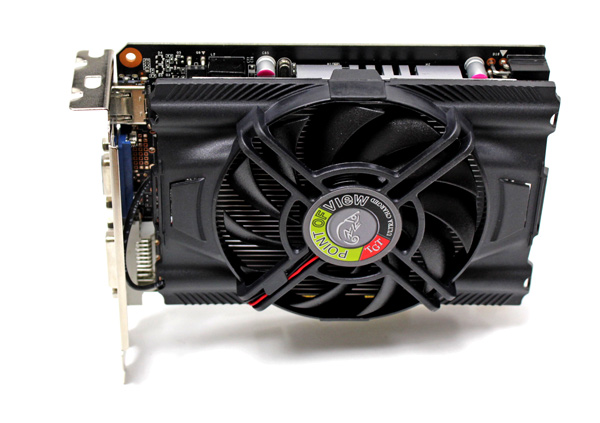
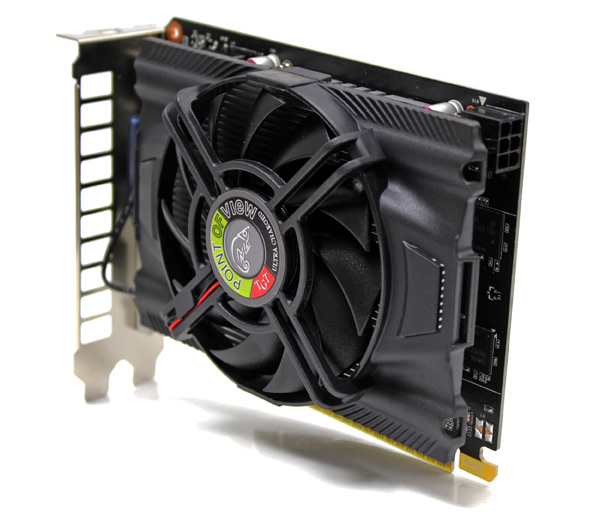
The fan is 9cm in diameter (CF-12915B 3000 RPM). It looks a lot like the fan used in GTX 680 cards. It also has 11 fins, but it uses two wires, instead of the GTX 680’s three. Its speed can still be controlled but all the tools we used read the RPM in percentages only. We maxed the fan out at about 90 percent RPM. All in all, the fan isn’t loud, not even when maxed out. The fan is easy to take out for cleaning - releasing the two latches holding the plastic frame will do.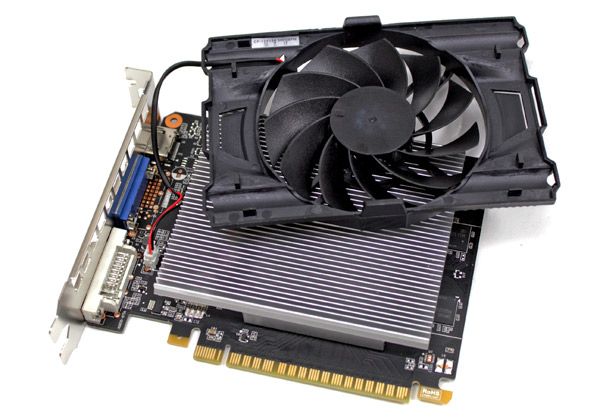
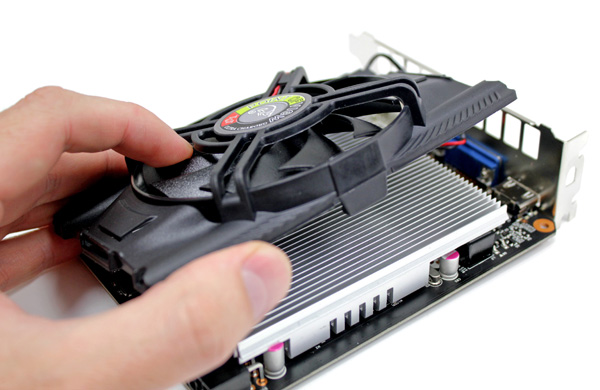
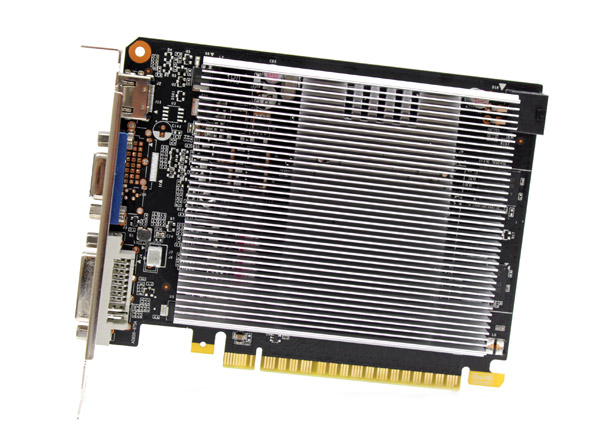
TGT’s GTX 650 Ultra Charged packs a total of 1GB of Samsung’s GDDR5, in four memory modules. All of the modules are placed on the front. The memory is model number K4G20325FD-FC04, meaning it’s GDDR5 specified to run at 5000MHz GDDR5 effectively.
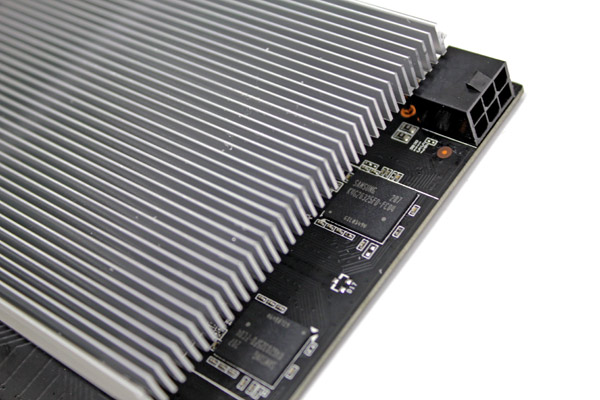
The power connector is in the top corner. Although reference GTX 650 cards draw 64W, the power connector is here due to overclocking.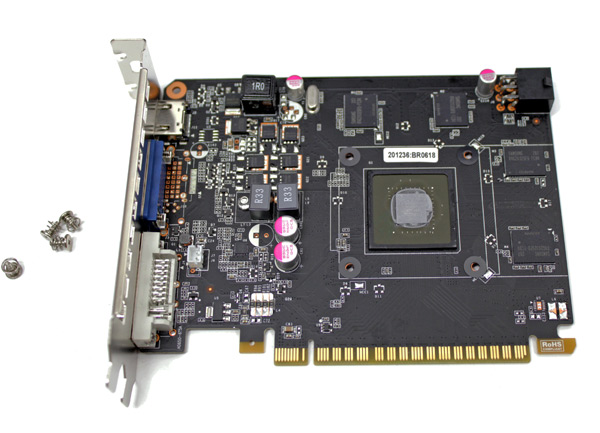
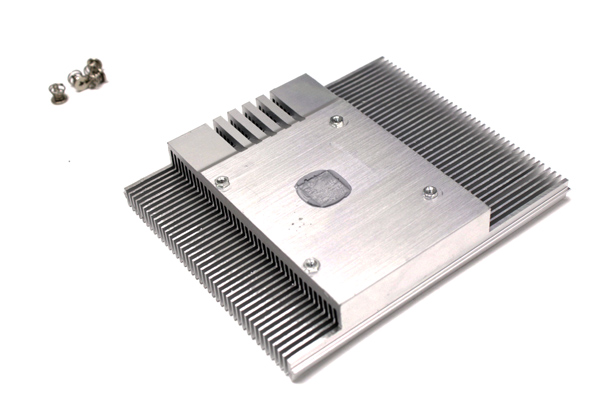
The Ultra Charged’s I/O panel offers three video outs. VGA out is slowly fading, but PoV/TGT thought there are still users who need it. The GTX 650 is too weak for surround gaming but using more displays for office work has multiple benefits as well, so no need to throw your old VGA display out just yet.
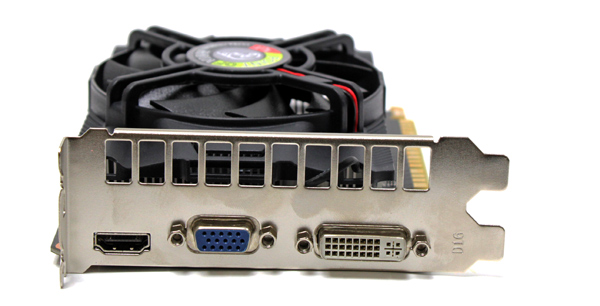
There is no SLI connector, which doesn’t mean SLI is off, but we don’t have two GTX 650 to try it out.
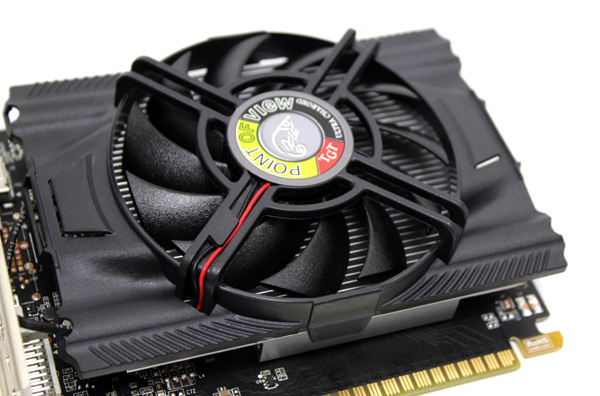
Motherboard: EVGA X79 FTW
CPU: Sandy Bridge-E Core i7 3820 (3.6GHz)
CPU Cooler: Thermalright HR-02 (Thermalright-Europa Distri www.PC-Cooling.de).
Memory: 8GB ADATA DDR3 1600 XPG Gaming series
Harddisk: OCZ Vertex 2 100 GB
Power Supply: CoolerMaster Silent Pro 1000W
Case: CoolerMaster Cosmos II Ultra Tower
Operating System: Win7 64-bit
Nvidia 306.02-desktop-win7-winvista-64bit-english-beta
AMD 12-8_vista_win7_64_dd_ccc.exe
(AMD HD 7970 : 12-6_vista_win7_64_dd_ccc.exe)
(EVGA GTX 690 4GB & Gainward GTX 670 Phantom SLI : 301.34-desktop-win7-winvista-64bit-english-whql)
3DMark 11
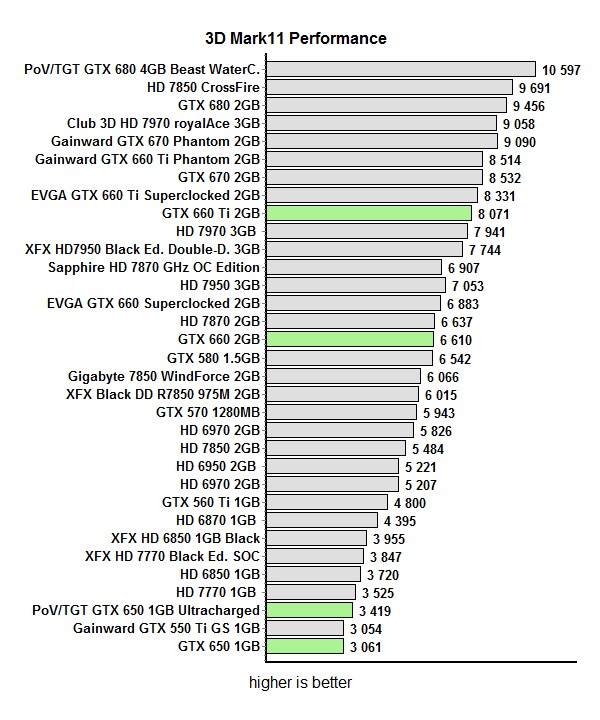
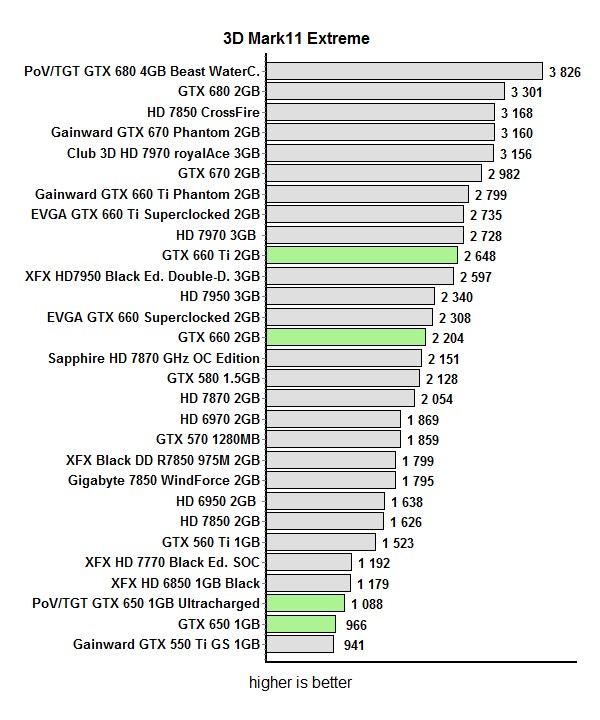
Aliens vs Predator
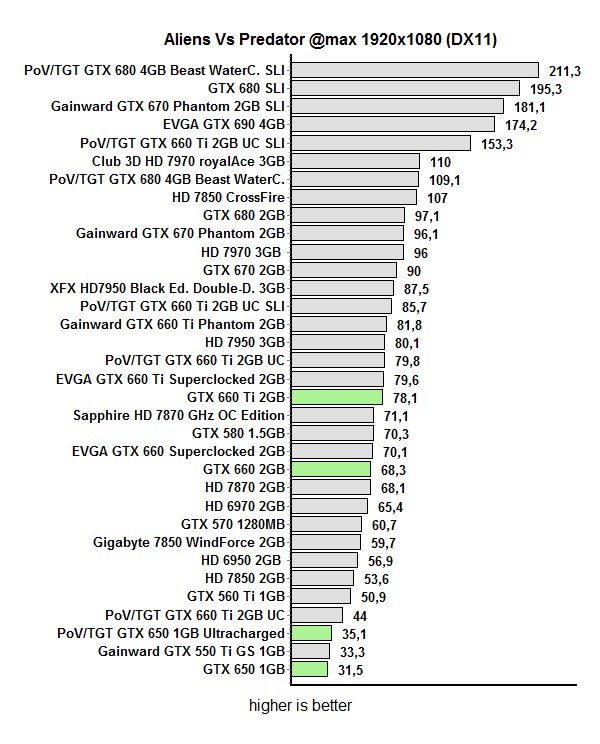
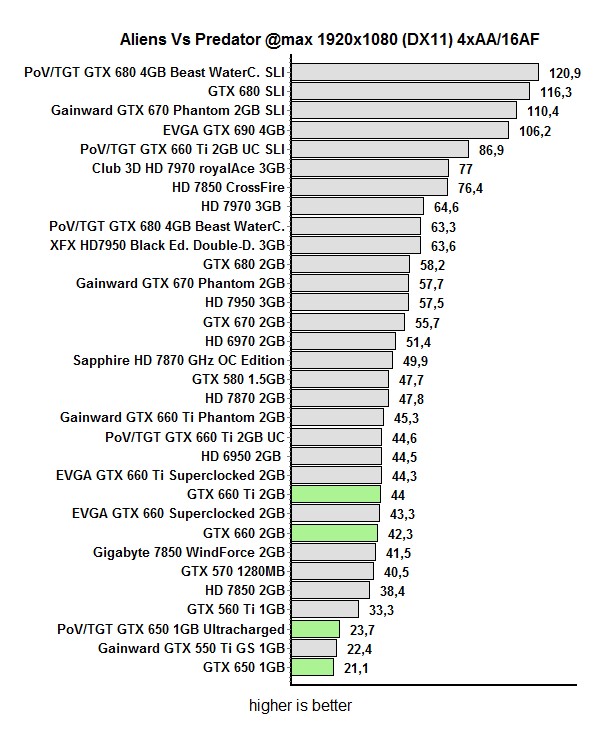
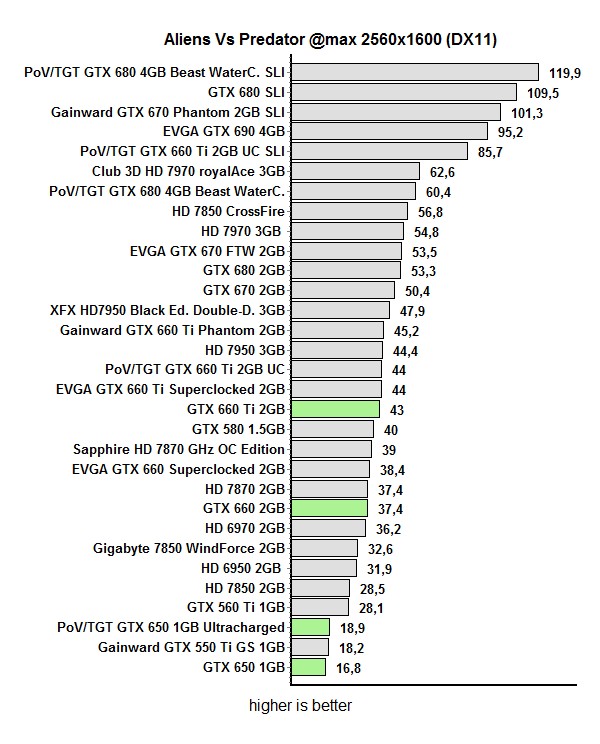
Metro 2033
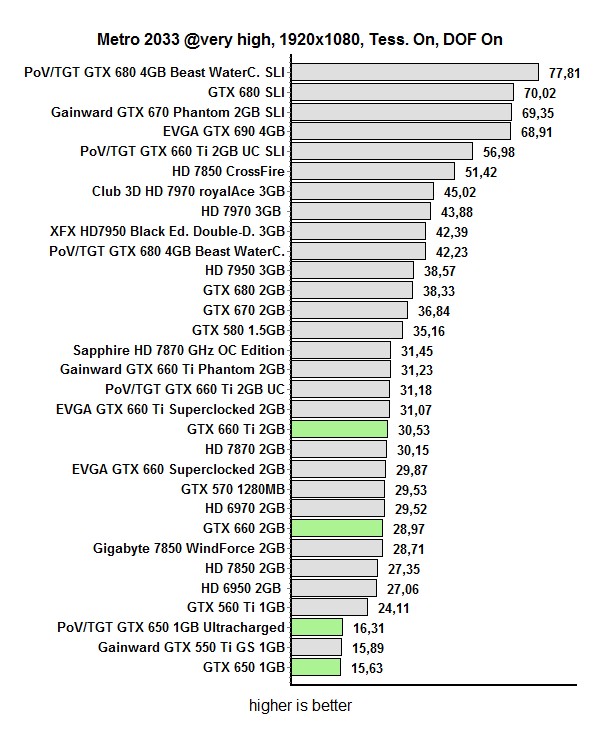
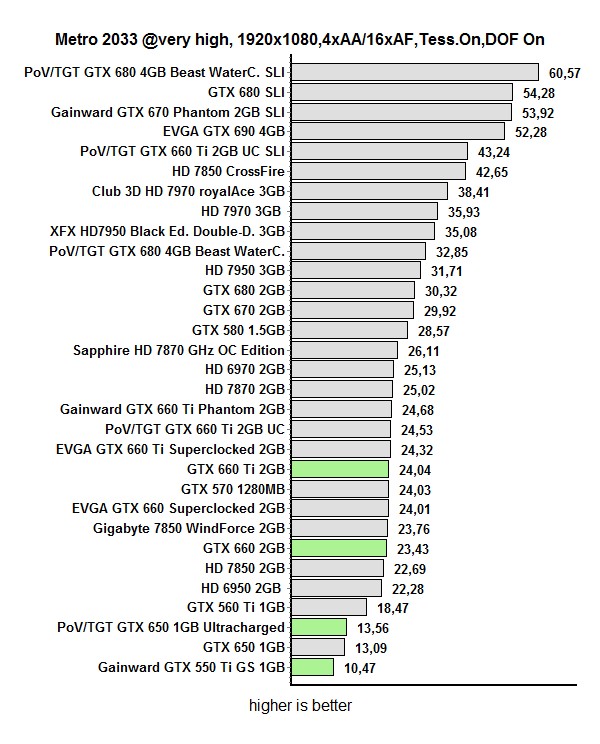
Crysis 2
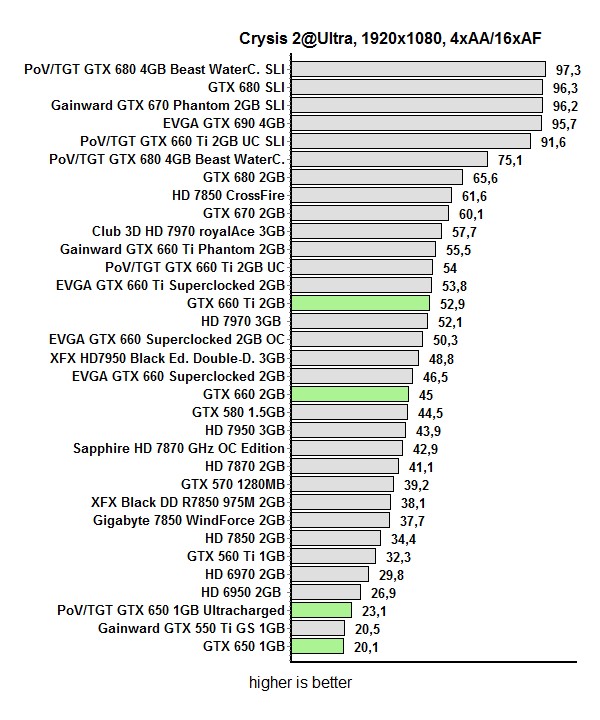
Unigine Heaven
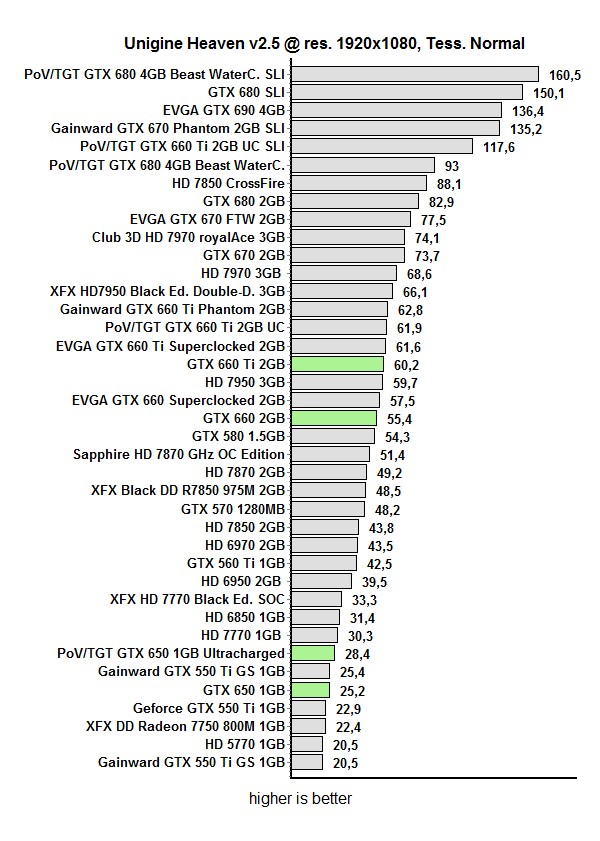
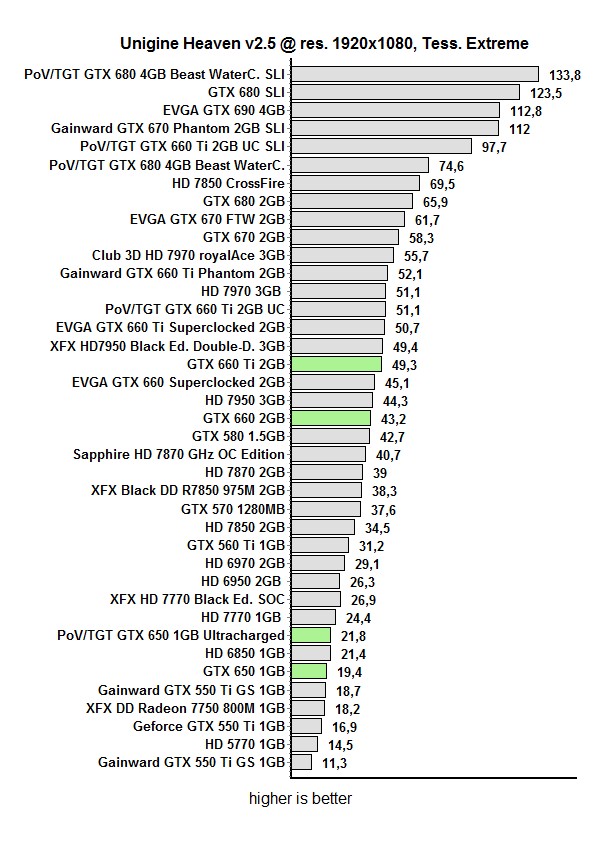
The GTX 650 can be further overclocked and we managed a 4-5 percent performance bump. TGT overclocked the card by 131MHz and we added another 65MHz (1189 to 1249MHz). GTX 650 has no Boost technology so the GPU runs at its maximum clock in 3D.
We overclocked the memory by 300MHz (effectively GDDR5).
The GTX 650 Ultra Charged had an 18 percent faster GPU and equally faster memory, which earned it an 18+ percent performance gain compared to the reference GTX 650.
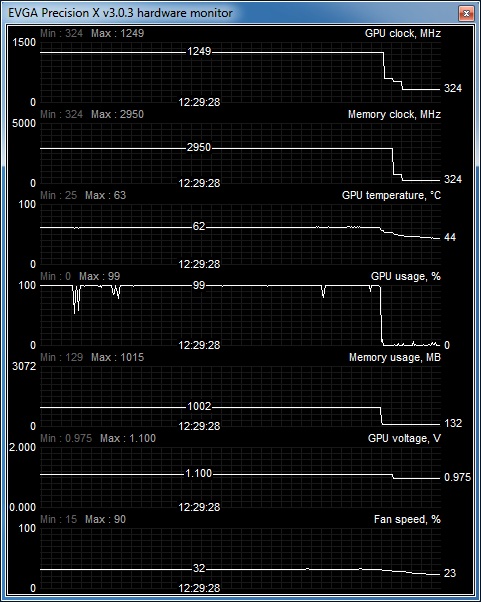
The GTX 650’s GPU has a TDP of 65W and it doesn’t get very hot. The large heatsink and a 9cm fan did well, both in performance and noise departments. The card didn’t exceed 60°C until our overclock, and even then it did so by 2°C. The fan goes up to 32 percent RPM in AUTO mode and it will stay quiet throughout.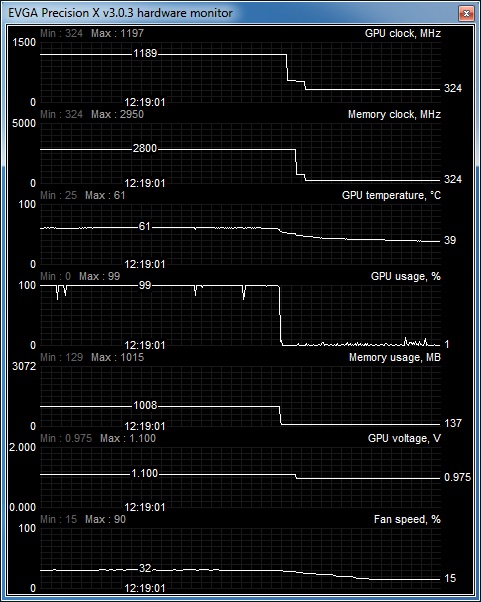
Consumption
Long story short, Kepler based offerings are better in power management than Fermi. Luckily, the GTX 650 Ultra Charged is here to save the GTX 650’s face, because the GTX 550 Ti almost crushed the reference version.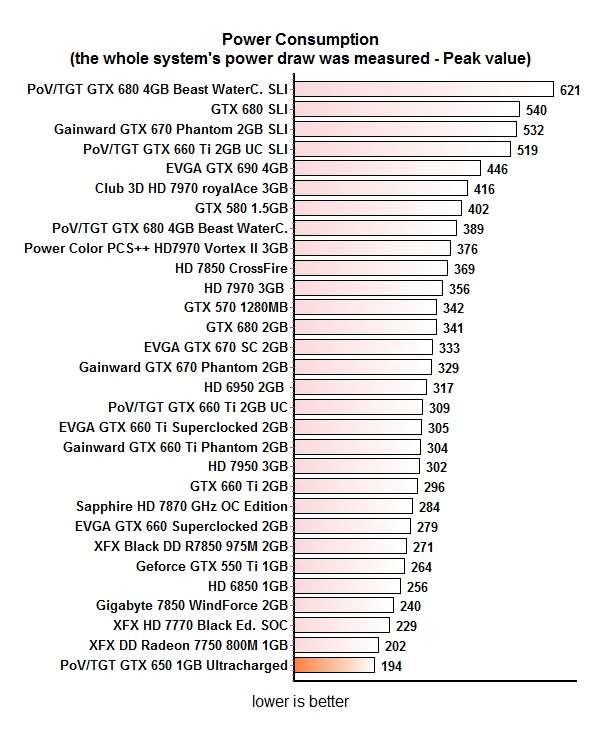
Nvidia Geforce GTX 650 and GT 640 use the same GK107 GPU, this time only faster. Compared to the GT 640, the thing that gave the GTX 650 a real performance boost is GDDR5, earning it two times the bandwidth per clock cycle than DDR3. However, the GTX 650 doesn’t offer spectacular performance gain compared to the last gen’s GTX 550 Ti. In fact, tessellation performancea and power consumption seem to be the things where the GTX 650 clearly takes the cake.
Point of View / TGT realized that the reference clock, although 158MHz higher than the GT 640’s 980MHz will not be enough to turn the GTX 650 into a capable gaming card, so it gave it additional 131MHz boost. Running a 1189MHz GPU and 5600MHz GDDR5 memory allowed for gaming up to 1920x1080, depending on the game of course. More demanding games such as Crysis 2 or Metro 2033 will require turning off some effects.
The GTX 650 Ultra Charged is priced €17 higher than the reference solution. However, the card performs better than the reference solution, has better cooling that stays quiet and can be overclocked a bit higher too.